- Home
- D. H. Lawrence
Sons and Lovers
Sons and Lovers Read online
Table of Contents
From the Pages of Sons and Lovers
Title Page
Copyright Page
D. H. Lawrence
The World of D. H. Lawrence andSons and Lovers
Introduction
Dedication
PART ONE
Chapter 1 - The Early Married Life of the Morels
Chapter 2 - The Birth of Paul, and Another Battle
Chapter 3 - The Casting Off of Morel—the Taking On of William
Chapter 4 - The Young Life of Paul
Chapter 5 - Paul Launches into Life
Chapter 6 - Death in the Family
PART TWO
Chapter 7 - Lad-and-Girl Love
Chapter 8 - Strife in Love
Chapter 9 - Defeat of Miriam
Chapter 10 - Clara
Chapter 11 - The Test on Miriam
Chapter 12 - Passion
Chapter 13 - Baxter Dawes
Chapter 14 - The Release
Chapter 15 - Derelict
Endnotes
Inspired by Sons and Lovers
Comments & Questions
For Further Reading
From the Pages of Sons and Lovers
Paul would be built like his mother, slightly and rather small. His fair hair went reddish, and then dark brown; his eyes were grey. He was a pale, quiet child, with eyes that seemed to listen, and with a full, dropping underlip. (page 65)
She felt the accuracy with which he caught her, exactly at the right moment, and the exactly proportionate strength of his thrust, and she was afraid. Down to her bowels went the hot wave of fear. She was in his hands. Again, firm and inevitable came the thrust at the right moment. She gripped the rope, almost swooning. (page 168)
She saw him, slender and firm, as if the setting sun had given him to her. A deep pain took hold of her, and she knew she must love him. And she had discovered him, discovered in him a rare potentiality, discovered his loneliness. (page 184)
He had come back to his mother. Hers was the strongest tie in his life. When he thought round, Miriam shrank away. There was a vague, unreal feel about her. And nobody else mattered. There was one place in the world that stood solid and did not melt into unreality : the place where his mother was. Everybody else could grow shadowy, almost non-existent to him, but she could not. It was as if the pivot and pole of his life, from which he could not escape, was his mother. (page 245)
A good many of the nicest men he knew were like himself, bound in by their own virginity, which they could not break out of. They were so sensitive to their women that they would go without them for ever rather than do them a hurt, an injustice. Being the sons of mothers whose husbands had blundered rather brutally through their feminine sanctities, they were themselves too diffident and shy. They could easier deny themselves than incur any reproach from a woman; for a woman was like their mother, and they were full of the sense of their mother. (page 306)
She put her hands over him, on his hair, on his shoulders, to feel if the raindrops fell on him. She loved him dearly. He, as he lay with his face on the dead pine-leaves, felt extraordinarily quiet. He did not mind if the raindrops came on him: he would have lain and got wet through: he felt as if nothing mattered, as if his living were smeared away into the beyond, near and quite lovable. This strange, gentle reaching-out to death was new to him. (page 314)
“You love me so much, you want to put me in your pocket. And I should die there smothered.” (page 453)
Sons and Lovers was first published in 1913.
Introduction, Notes, and For Further Reading
Copyright © 2003 by Victoria Blake.
Note on D. H. Lawrence, The World of D. H. Lawrence and Sons and Lovers,
Inspired by Sons and Lovers, and Comments & Questions
Copyright © 2003 by Fine Creative Media, Inc.
All rights reserved. No part of this publication may be reproduced or
transmitted in any form or by any means, electronic or mechanical,
including photocopy, recording, or any information storage and
retrieval system, without the prior written permission of the publisher.
Barnes & Noble Classic and the Barnes & Noble Classics colophon are
trademarks of Barnes & Noble, Inc.
Sons and Lovers
ISBN 1-59308-013-1
eISBN : 97-8-141-14331-9
LC Control Number 2003100880
Produced by:
Fine Creative Media, Inc.
322 Eighth Avenue
New York, NY 10001
President & Publisher: Michael J. Fine
Consulting Editorial Director: George Stade
Editor:Jeffrey Broesche
Editorial Research: Jason Baker
Vice-President Production: Stan Last
Senior Production Manager: Mark A. Jordon
Production Editor: Kerriebeth Mello
Printed in the United States of America
QM
3 5 7 9 10 8 6 4
D. H. Lawrence
David Herbert Lawrence was born on September 11, 1885, in Eastwood, a coal-mining town in Nottinghamshire, England, the fourth child of a couple whose marriage Lawrence later described as “one carnal, bloody fight.” Lawrence’s psychologically intimate relationship with his mother would serve as the grounds for many of his novels. Lawrence studied to be a teacher but became interested in the arts. Jessie Chambers, a school love interest, submitted a number of Lawrence’s early poems to Ford Madox Ford, editor of The English Review, and he published them. This first exposure would prove to be fruitful, and Lawrence soon published several novels, including The White Peacock (1911) and The Trespasser (1912), as well as Love Poems and Others (1913).
Lawrence gained fame and notoriety in 1913 with the publication of Sons and Lovers, a novel which was criticized by some as being too overtly sexual. Sons and Lovers was followed by The Rainbow, a story of two sisters growing up in northern England that was banned upon its publication for its alleged obscenity. His novel Lady Chatterley’s Lover was pronounced obscene and banned in the United Kingdom and America. Despite the censorship, Lawrence remained unapologetic for creating “art for my sake.” Lawrence’s personal life, including his elopement with Frieda von Richthofen, wife of one of his professors and the mother of three children, fueled the aura of scandal that followed him throughout his career.
Despite censorship and other setbacks, in his exceptionally prolific literary career Lawrence authored more than a dozen novels, three volumes of stories and three volumes of novellas, an immense collection of poetry, and numerous works of nonfiction, which he called his “Pollyanalyties.” He also wrote eight plays, most of which have been forgotten. The Lawrences traveled widely, but as Lawrence’s health worsened they settled in the south of France, where the author died on March 2, 1930. His ashes lie in a memorial chapel at his ranch in New Mexico.
The World of D. H. Lawrence and
Sons and Lovers
1885 David Herbert Lawrence is born on September 11 in Eastwood, Nottinghamshire, a working-class mining town in central England. The sickly Lawrence is confined to bed for much of his early childhood and grows close to his mother, who tends to him.
1898-1901 Lawrence attends Nottingham High School on a scholarship, then takes a job as a clerk in a surgical appliance factory, but he leaves after suffering an attack of pneumonia. His brother, Ernest, dies in October 1901.
1902- Lawrence takes a part-time teaching job at the British
1906 Schools in Eastwood and attends a teacher-training center in Ilkeston.
1906 Lawrence enrolls at University College, Nottingham, to get his teacher’s certificate; he leaves after two years.
1909-1910 The Engl
ish Review publishes several of Lawrence’s poems. His mother, Lydia, dies in December 1910; Lawrence assists her by administering an overdose of morphine.
1911 Lawrence’s first novel, The White Peacock, is published.
1912 Lawrence and Frieda von Richthofen, the wife of Lawrence’s former Nottingham professor Ernest Weekley and sister of famous aviator Manfred von Richthofen, run away to Germany and Italy.
1913 Rejected at first by Heinemann Publishers, the autobiographical Sons and Lovers is published. Criticized for his graphic depiction of sexual relations, Lawrence defends himself by stating that “whatever the blood feels, and believes, and says, is always true.”
1914 World War I breaks out. Lawrence and Frieda marry on July 13. Unable to obtain passports, for the duration of the war they are forced to live in various places in England, including Cornwall and Derbyshire, where they share a house with John Middleton Murray and the writer Katherine Mansfield.
1915 Upon the publication of The Rainbow, Lawrence is prosecuted for his liberal use of profanity and graphic descriptions of sex, and the novel is suppressed. More than 1,000 copies of the book are burned.
1916 Lawrence is introduced to Lady Ottoline Morrell, the wife of a liberal member of Parliament, and she becomes one of his most important patrons. Through her, Lawrence forms friendships with Aldous Huxley, E. M. Forster, and Bertrand Russell.
1917 Lawrence and Frieda are suspected of being spies for the Germans.
1919 The Lawrences journey throughout Europe, stopping in Sicily, Sardinia, and Switzerland. Lawrence publishes Women in Love, the sequel to The Rainbow, in Italy.
1920 He publishes Women in Love in New York.
1921 Women in Love is published in London. Movements in European History, Lawrence’s first major nonfiction work, is published, as is his Psychoanalysis and the Unconscious.
1922 Aaron’s Rod, a novel that reflects the influence of Friedrich Nietzsche on Lawrence, is published. The Lawrences travel to Ceylon and Australia.
1923 They visit Mexico as well as New York and Los Angeles. Studies in Classic American Literature—in which Lawrence considers Benjamin Franklin, Nathaniel Hawthorne, Herman Melville, Walt Whitman, and others—is published.
1924- 1925 Mabel Dodge Luhan, a New York socialite, gives the Lawrences her Kiowa Ranch in Taos, New Mexico, in return for the original manuscript of Sons and Lovers. Lawrence’s father, Arthur, dies. While visiting Mexico City, Lawrence falls ill with tuberculosis and is forced to return to England.
1925- 1926 The Lawrences settle near Florence. Frieda begins an affair with Angelino Ravagli, a former Italian infantry officer whom she will marry in 1950. Lawrence visits his hometown of Eastwood for the last time. The Plumed Serpent, a political novel about Mexico and its ancient Aztec religion, is published.
1928 Lady Chatterley’s Lover is banned in the United Kingdom and the United States, creating a great demand for the book.
1929 Lawrence’s Expressionist paintings, for which he gains posthumous renown, are declared obscene and confiscated from an exhibition at London’s Warren Gallery.
1930 Lawrence succumbs to tuberculosis on March 2 in Vence, France. Frieda moves to Kiowa Ranch, New Mexico, where she builds a small memorial chapel that houses Lawrence’s ashes.
1960 An unexpurgated version of Lady Chatterley’s Lover is published after Penguin Books is acquitted of obscenity charges brought under the Obscene Publications Act. The trial lasts six days; the thirty-five expert witnesses called to testify include E. M. Forster.
Introduction
THE STORY of how and why D. H. Lawrence wrote Sons and Lovers is a love story as much as it is a story about literature. The story begins at D. H. Lawrence’s birth and ends just before the outbreak of World War One. Although it is a love story, it is not a story about amor, per se, the exclusive romantic love. Rather, it is about love in all its various guises—love for the Mother Country and the mother, love for the work of writing and, above all, love for life itself D. H. Lawrence was a passionate man; he threw himself into life. In his presence, his peers were aware of life lived more highly, of emotions felt more truly and of the rawness of human experience. Lawrence took life in huge gulps, personalizing it and, in the end, changing it to suit his own artistic goals.
“I remember seeing him sitting apart at a table doing matriculation work,” writes Jessie Chambers in her book D. H. Lawrence: A Personal Record (see “For Further Reading”). “He smiled across at me, and I saw again his uniqueness, how totally different he was from any of the other youths.... There was his sensitiveness ... his delicacy of spirit, that, while it contributed vitally to his charm, made him more vulnerable, more susceptible to injury from the crudeness of life” (p. 47).
Sons and Lovers is Lawrence’s third novel. He began writing it when he was twenty-five years old, a young, sensitive schoolteacher with periodic bouts of pneumonia and a penchant for problems of the heart. The novel underwent four major revisions and a name change before being published in 1913. As conceived, it was to be a book based on fact: the story of the young man, Paul Morel, growing up in a coal-mining district of the English Midlands. As such, it would be a thinly disguised fictionalization of Lawrence’s own life, a portrait of the artist as a young man or, as the critic Harold Bloom suggests, a portrait of the artist as a young prig.
Lawrence was born in 1885 in a lower-middle-class town in Nottinghamshire during a time in English history characterized by repressive social mores, strict morality, and austere, even ascetic, religious practices. In other words, the author was born at a time and in a place particularly inclined toward priggishness.
Lawrence chaffed under the yoke of Victorian England. His gift of perception, which told him that life was a vast mystery and wonder, also told him that his country was ruining itself with its industrialization, its mechanization, and its impulse toward war. As he grew up, he grew intolerant. “Curse you, my countrymen,” he wrote to Edward Garnett, his publisher and friend, in a letter dated July 1912, “you have put the halters round your necks, and pull tighter and tighter from day to day. You are strangling yourselves, you blasted fools” (The Letters of D. H. Lawrence, Vol. 1, edited by James T. Boulton). To borrow Lawrence’s own phrase, England suffered under a “Thou Shalt Not” mentality.
Lawrence longed for the implied permission of the “Thou Shalt,” two words that promise not only freedom but also free will. The purpose of life, Lawrence wrote, was not simply to live, but to live vitally and at the edge of the great mystery of existence. This will to live—or, perhaps more correctly, the will toward life—was, in a characteristically Lawrencian sense, mixed up with a philosophy of sex. With more emotion than logic, Lawrence felt that “Thou Shalt,” when murmured by a partially clothed woman, promised not only sexual union but also spiritual union. His philosophy is not simply, as future critics would categorize it, “sex in the head.” What Lawrence wanted was not crude, not base, not purely sexual. “It’s a pity that sex is such an ugly little word,” Lawrence wrote in an essay titled “Sex Versus Loveliness.” “While ever it lives, the fire of sex, which is the source of beauty and anger, burns in us beyond our understanding.... Sex and beauty are one thing, like flame and fire. If you hate sex, you hate beauty.” Lawrence wanted, through sex, to understand beauty and through beauty, mystery. It was this understanding that Lawrence defined as intuition, and it was this intuition that Lawrence felt to be his prime talent as a writer.
And it is a pity that sex was such a dirty little word in Victorian England, though for admirers of Lawrence it would be hard to wish it otherwise. The most subtle, almost sublime, tensions in his writing owe much to the war between his second-natural will to live and his natural desire to obey. Sons and Lovers is the work of a confused man, one who could not figure out which impulse to follow. As in life, so in fiction. In Sons and Lovers, the two impulses are represented on the one side by Paul Morel’s relationship with his mother and on the other side by his relationship with first M
iriam, then Clara. In a much-quoted letter written to Edward Garnett dated November 1912, Lawrence defends the idea of the book, succinctly illuminating its themes.
A woman of character and refinement goes into the lower class, and has no satisfaction in her own life. She has had a passion for her husband, so the children are born of passion, and have heaps of vitality. But as her sons grow up she selects them as lovers—first the eldest, then the second. These sons are urged into life by their reciprocal love of their mother—urged on and on. But when they come to manhood, they can’t love, because their mother is the strongest power in their lives, and holds them.... As soon as the young men come into contact with women, there’s a split. William gives his sex to a fribble, and his mother holds his soul. But the split kills him, because he doesn’t know where he is. The next son gets a woman who fights for his soul—fights his mother. The son loves the mother—all the sons hate and are jealous of the father. The battle goes on between the mother and the girl, with the son as object. The mother gradually proves stronger, because of the tie of blood. The son decides to leave his soul in his mother’s hands, and, like his elder brother, go for passion. He gets passion. Then the split begins to tell again. But, almost unconsciously, the mother realizes what is the matter, and begins to die. The son casts off his mistress, attends to his mother dying. He is left in the end naked of everything, with the drift toward death (Letters).
Since Freud, mother love versus romantic love has become a familiar theme. Hundreds of pages, perhaps thousands, have been written about Lawrence’s Oedipus complex as demonstrated in the novel. Critics began to see the novel in a Freudian light as early as 1913; Sons and Lovers was taken to be the first, great, Freudian allegory. “As he stooped to kiss his mother, she threw her arms round his neck, hid her face on his shoulder, and cried, in a whimpering voice, so unlike her own that he writhed in agony,” Lawrence wrote. “‘And I’ve never—you know, Paul—I’ve never had a husband—not really—’ ” Mrs. Morel says. Paul “stroked his mother’s hair, and his mouth was on her throat” (page 234).

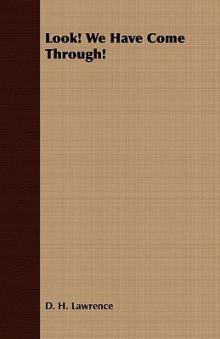 Look! We Have Come Through!
Look! We Have Come Through!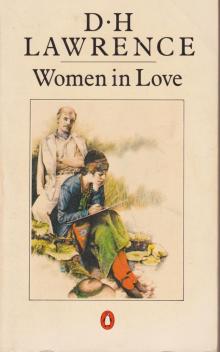 Women in Love
Women in Love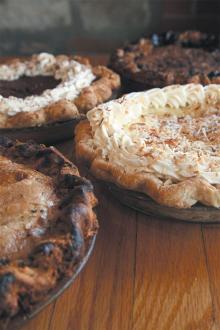 The Ladybird
The Ladybird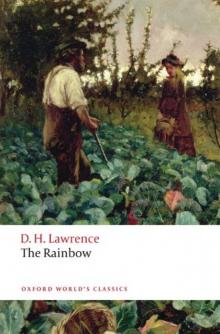 The Rainbow
The Rainbow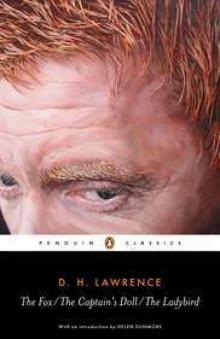 The Captain's Dol
The Captain's Dol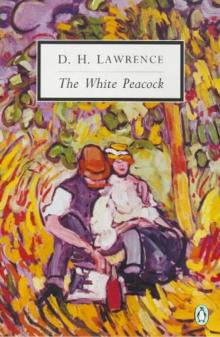 The White Peacock
The White Peacock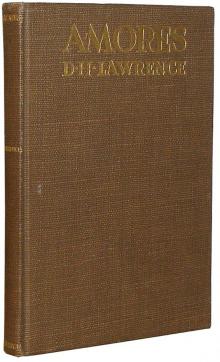 Amores
Amores Lady Chatterley's Lover
Lady Chatterley's Lover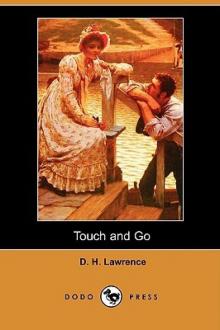 Touch and Go
Touch and Go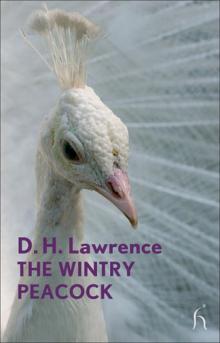 The Wintry Peacock
The Wintry Peacock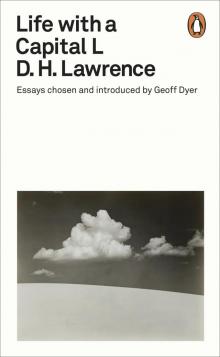 Life with a Capital L
Life with a Capital L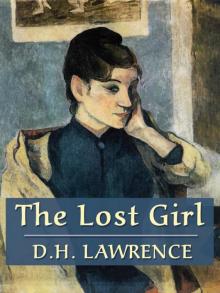 The Lost Girl
The Lost Girl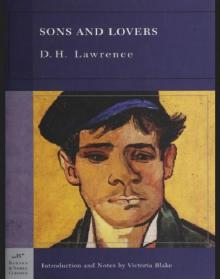 Sons and Lovers
Sons and Lovers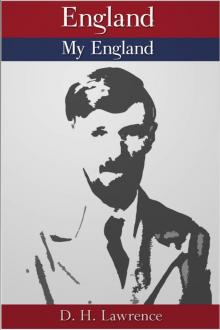 England, My England
England, My England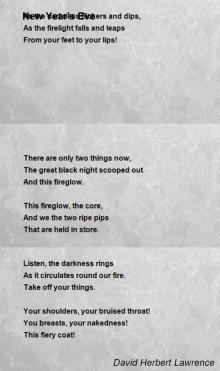 New Poems
New Poems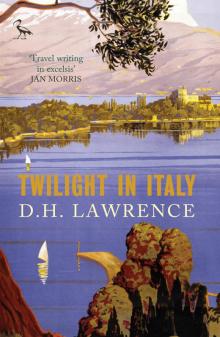 Twilight in Italy
Twilight in Italy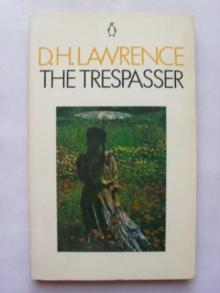 The Trespasser
The Trespasser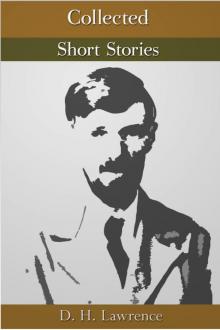 The Collected Short Stories
The Collected Short Stories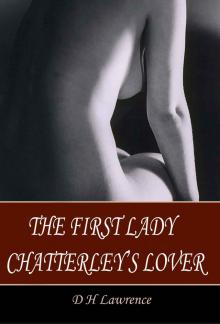 The First Lady Chatterley's Lover
The First Lady Chatterley's Lover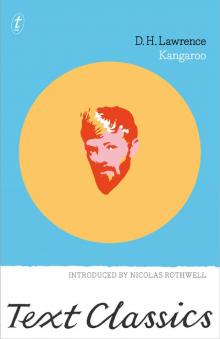 Kangaroo
Kangaroo Bay
Bay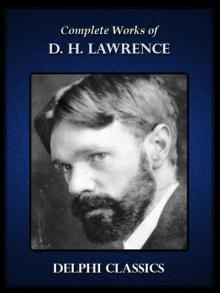 Complete Works of D.H. Lawrence
Complete Works of D.H. Lawrence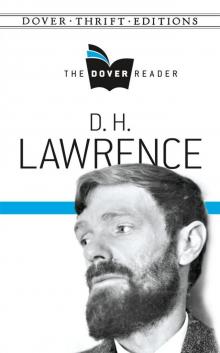 D H Lawrence- The Dover Reader
D H Lawrence- The Dover Reader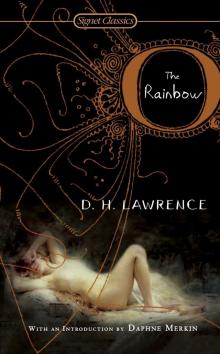 The Rainbow (100th Anniversary ed.)
The Rainbow (100th Anniversary ed.)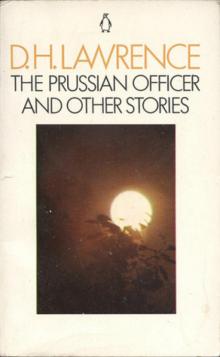 The Prussian Officer
The Prussian Officer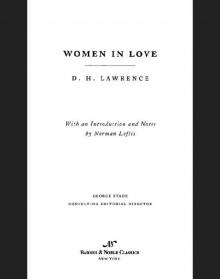 Women in Love (Barnes & Noble Classics Series)
Women in Love (Barnes & Noble Classics Series)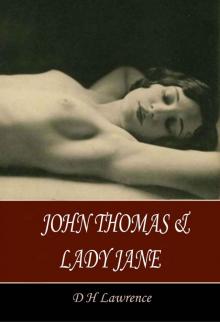 John Thomas and Lady Jane
John Thomas and Lady Jane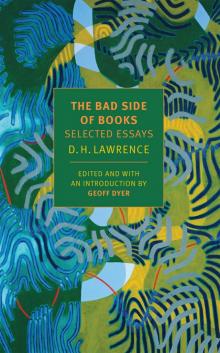 The Bad Side of Books
The Bad Side of Books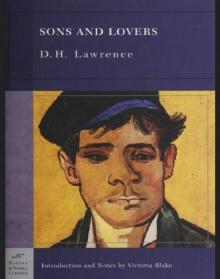 Sons and Lovers (Barnes & Noble Classics Series)
Sons and Lovers (Barnes & Noble Classics Series)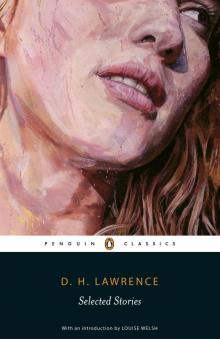 Selected Stories
Selected Stories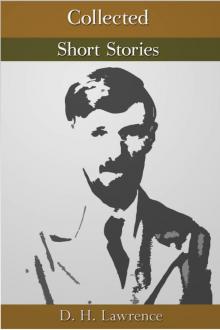 Collected Short Stories
Collected Short Stories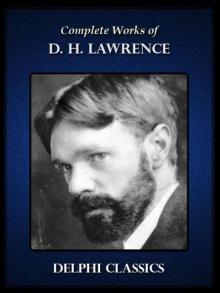 Complete Works of D.H. Lawrence (Illustrated)
Complete Works of D.H. Lawrence (Illustrated)